Pursuant to Conclusion No. 121-KL/TW dated January 24, 2025 of the 13th Party Central Committee on summarizing Resolution No. 18-NQ/TW; Resolution No. 60-NQ/TW dated April 12, 2025 of the 13th Party Central Committee and the conclusions of the 13th Politburo and Secretariat on reorganizing the apparatus and implementing the 2-level administrative unit model, to ensure synchronization and unity in arranging and assigning deputy leaders in agencies and organizations of the political system; after considering the proposal of the Central Organizing Committee (Report No. 382-TTr/BTCTW dated August 28, 2025), the Politburo and Secretariat conclude on the orientation of the number of deputy leaders of agencies and organizations in the political system as follows:
1. Purpose, requirements, scope
1.1. Research and regulate the orientation of the number of deputies of agencies and organizations (from deputy minister level and equivalent or lower) for the period 2030 - 2035.
1.2. Implement synchronization and unification of the number of deputies among localities, agencies, organizations and units in the political system, ensuring that agencies are organized in a streamlined, efficient, effective, and practical manner, and not unequal, taking into account the specific characteristics of units implementing mergers and acquisitions.
1.3. Scope of application includes: (1) Specialized advisory and support agencies, public service units of Party committees at all levels; Central Agency of the Vietnam Fatherland Front, Provincial-level Fatherland Front Agencies; Vietnam Fatherland Front Committee, socio-political organizations at the Central, provincial and communal levels. (2) Agencies of the National Assembly. (3) Ministries, ministerial-level agencies, agencies under the Government. (4) Office of the President, Supreme People's Court, Supreme People's Procuracy , State Audit. (5) People's Councils, People's Committees at provincial and communal levels and specialized agencies of People's Councils, People's Committees at provincial and communal levels. (6) Commune-level Party Committees.
2. Viewpoint
2.1. Thoroughly implement the Party's policy of unified leadership of personnel work and management of the staff; the regulation and orientation of the number of deputies must ensure streamlining, organization of the apparatus and agencies and organizations to operate smoothly, effectively and efficiently, meeting requirements and tasks; ensure synchronization and unity between agencies, organizations and localities in the political system, in accordance with the arrangement and assignment of personnel of executive committees and standing committees of Party committees at all levels and a reasonable transition roadmap, gradually reducing the current number of deputies so that by the end of 2030, the number of deputies of agencies and organizations in the political system will comply with the orientation and regulations of the Politburo .
2.2. The competent authority shall prescribe the total number of deputies of the agencies and organizations under each level; the Party Committee, the leadership collective, and the head of the agency or organization shall decide within their authority and be responsible for the specific number of deputies of each agency or organization, ensuring that it does not exceed the total number of deputies prescribed.
2.3. Determine the number of deputies in agencies and organizations on the basis of: (1) Inheriting current regulations, in accordance with the requirements of decentralization, delegation of powers, functions, tasks and practical situations. (2) Functions, tasks; scale and scope of leadership and management (number of affiliated organizations; number of staff, party members, union members, association members...); specific characteristics of organization and operation of agencies, organizations, units, localities; classification of administrative units (population size, natural area, number of administrative units under provincial level, socio-economic conditions and specific factors), classification of urban areas, ensuring conformity with the characteristics of each level, each sector, each locality.
3. Principles for guiding the number of deputies of agencies and organizations
The orientation of the number of deputies of agencies and organizations in the political system must simultaneously ensure the following principles:
3.1. The maximum number of deputies shall not exceed 50% of the total number of staff assigned to the agency or organization (not applicable to commune-level Fatherland Front agencies).
3.2. Determining the number of deputies in an agency or organization must ensure the principle that the maximum number of deputies in a subordinate organization does not exceed the number of deputies of the direct superior organization (such as: The maximum number of deputy directors and deputy department heads of a department or division does not exceed the number of deputy ministers; the maximum number of deputy heads of a department under a department or division does not exceed the number of deputy directors and deputy department heads; the maximum number of deputy heads of a department under a department or division does not exceed the number of deputy directors of the department...). For agencies and organizations at the same level, the maximum number of deputies of an agency or organization without an internal organization does not exceed the number of deputies of an agency or organization with an internal organization (such as: The maximum number of deputy department heads does not exceed the number of deputy department directors); the agency or organization with more affiliated units can have a higher maximum number of deputies.
3.3. Determine the number of deputies in a specific agency or organization as follows:
a) For central and local agencies and organizations that do not carry out mergers and acquisitions
- The number of deputy ministers and equivalent, vice chairmen of people's councils, people's committees at provincial and communal levels...; the number of deputy focal points within central and local agencies and organizations are basically implemented according to current regulations.
- For central and local agencies and organizations that do not have regulations on the maximum number of deputies:
+ At the Central level: (1) The maximum number of deputy ministers and equivalent positions shall not exceed 5 people; the deputy positions of the Party's departments and agencies at the Central level shall comply with the regulations of the Central level, the Politburo, and the Secretariat. (2) The maximum number of deputy department heads and equivalent positions shall not exceed 3 people. (3) The maximum number of deputy department heads and equivalent positions shall comply with the regulations on the number of deputy department heads and equivalent positions of ministries and branches.
In special cases, the competent authority will decide.
+ At the local level: Implement regulations on the number of deputies of equivalent positions and titles in provincial-level departments and branches, and commune-level offices.
b) For central and local agencies and organizations implementing mergers and acquisitions
- Number of deputy heads of newly established central departments, ministries and branches on the basis of merging and consolidating many agencies and organizations at the same level:
+ For departments, ministries and branches that do not have regulations on the maximum number of deputies: (1) Departments, ministries and branches that are merged or consolidated from 2 agencies, the maximum number of deputy ministers and equivalents shall not exceed 6 people. (2) Departments, ministries and branches that are merged or consolidated from 3 agencies, the maximum number of deputy ministers and equivalents shall not exceed 7 people.
+ For departments, ministries and branches that have regulations on the maximum number of deputies: (1) Departments, ministries and branches that are merged or consolidated from 2 agencies, the maximum number of deputy ministers and equivalents must not exceed 1 person compared to current regulations. (2) Departments, ministries and branches that are merged or consolidated from 3 agencies, the maximum number of deputy ministers and equivalents must not exceed 2 people compared to current regulations and ensure that the number of deputy ministers and equivalents of the department, ministry or branch does not exceed 7 people.
+ For department and bureau levels: (1) Departments and bureaus that are merged or consolidated from 2 agencies shall have a maximum number of deputies not exceeding 1 person compared to current regulations. (2) Departments and bureaus that are merged or consolidated from 3 agencies shall have a maximum number of deputies not exceeding 2 people compared to current regulations and shall ensure that they do not exceed the number of deputies of the direct superior.
- Regarding the number of vice chairmen of the People's Council and vice chairmen of the People's Committee of the province and city:
+ For Ho Chi Minh City: The maximum number of vice chairmen of the City People's Council shall not exceed 2 people; the maximum number of vice chairmen of the People's Committee shall not exceed 3 people compared to the current regulations of Ho Chi Minh City.
+ For centrally-run cities that are merged: (1) Established on the basis of merging or consolidating 2 provincial-level administrative units, the maximum number of vice chairmen of the city's People's Council shall not exceed 1 person; the maximum number of vice chairmen of the city's People's Committee shall not exceed 2 people compared to the current regulations of the province or city merging with the highest administrative unit classification or according to the administrative unit classification and urban classification of the city after the arrangement. (2) Established on the basis of merging or consolidating 3 provincial-level administrative units, the maximum number of vice chairmen of the city's People's Council shall not exceed 2 people; the maximum number of vice chairmen of the city's People's Committee shall not exceed 3 people compared to the current regulations of the province or city merging with the highest administrative unit classification or according to the administrative unit classification and urban classification of the city after the arrangement.
+ For provinces: (1) Established on the basis of merging or consolidating 2 provinces: The maximum number of vice chairmen of the provincial people's council shall not exceed 1 person; the maximum number of vice chairmen of the provincial people's committee shall not exceed 2 people compared to the current regulations of the merged province with the highest administrative unit classification or according to the administrative unit classification of the province after the arrangement. (2) Established on the basis of merging or consolidating 3 provinces: The maximum number of vice chairmen of the provincial people's council shall not exceed 1 person; the maximum number of vice chairmen of the provincial people's committee shall not exceed 3 people compared to the current regulations of the merged province with the highest administrative unit classification or according to the administrative unit classification of the province after the arrangement.
- For departments, agencies and branches of provinces and cities: (1) When merging from 2 provinces and cities, the maximum number of deputy directors of departments, deputy heads of departments and equivalents must not exceed 1 person/1 agency; in the case of newly merging departments, agencies and branches, the maximum number must not exceed 2 people/1 agency compared to current regulations. (2) When merging from 3 provinces and cities, the maximum number of deputy directors of departments, deputy heads of departments and equivalents must not exceed 2 people/1 agency; in the case of newly merging departments, agencies and branches, the maximum number must not exceed 3 people/1 agency compared to current regulations and must not exceed the number of deputies of the direct superior. (3) Special departments, offices under departments... only in 1 province or city when merging, merging, the number of deputy directors of departments, deputy heads of departments and equivalents must remain the same according to current regulations.
- For agencies and organizations under central departments, ministries and branches (such as: departments, bureaus, offices and equivalents); under provincial departments, agencies and branches (such as: offices and equivalents) that do not have regulations on the maximum number of deputies, the number of deputies is according to the provisions in Point a, Clause 3.3, Section 3; the maximum number of deputies (increased) is according to the provisions in Point b, Clause 3.3, Section 3 (such as: The number of deputy department heads under agencies that do not have regulations on the number of deputy department heads, according to Point a is determined to be a maximum of 3 people, if 2 departments merge according to Point b the maximum does not exceed 1 person, accordingly the new department has a maximum of 4 deputy department heads...).
c) For agencies and organizations in the Central agency that receive the functions, tasks, and organization of agencies and organizations or establish new ones on the basis of reorganization (such as: from a general department to a department; regional branches...): The maximum number of deputies must not exceed 1 person compared to the current prescribed number.
d) For communes, wards and special zones
- Number of deputy secretaries: 2 (1 permanent deputy secretary, 1 deputy secretary, chairman of the People's Committee).
- On average, each commune, ward, and special zone has: 1 vice chairman of the People's Council; an average of 2.5 vice chairmen of the People's Committee; an average of 2 deputy heads/1 department, office, and equivalent. Based on the number of communes, wards, special zones, and the Standing Committee of the Provincial Party Committee: (1) Determine the total number of vice chairmen of the People's Council, vice chairmen of the People's Committee, and deputy heads of departments and offices at the commune level in the entire province or city. (2) Lead and direct the decision on the specific number of deputies in accordance with the scale of area, population, classification of administrative units, classification of urban areas, GRDP, state budget revenue, number of party organizations, party members, union members, association members, etc. for each commune, ward, and special zone.
d) Number of executive committees, standing committees, deputy secretaries of provincial and municipal party committees: The Central Organizing Committee advises the Politburo and the Secretariat to make specific regulations.
3.4. In special cases, the competent authority shall consider and decide.
4. Assignment of implementation
Based on the above viewpoints and principles, the Politburo and the Secretariat assign agencies to perform the following tasks:
4.1. The Government Party Committee leads and directs: (1) Reviewing the leadership and management positions of agencies, organizations and units under the Government's management, ensuring consistency in the names of each type of organization and compliance with Party regulations and laws. (2) Issuing criteria for determining the number of deputies; regulating the specific number of deputies for agencies and organizations according to the management hierarchy, ensuring that it does not exceed the orientation and regulations on the number of deputies of the Politburo and the Secretariat.
4.2. The Party Committee of the National Assembly leads and directs: Promulgating criteria for determining the number of deputies; regulating the specific number of deputies for agencies, organizations, and units under the National Assembly according to the management hierarchy and the number of vice chairmen of the People's Councils at the provincial and communal levels; the number of deputies in the committees of the People's Councils at the provincial and communal levels; the number of deputies of the National Assembly delegation office and the People's Councils at the provincial level, ensuring that it does not exceed the orientation and regulations on the number of deputies of the Politburo and the Secretariat.
4.3. The Party Committee of the Fatherland Front and the Central mass organizations shall lead and direct the issuance of criteria for determining the number of deputies; prescribe the specific number of deputies for agencies and organizations under the Central Agency of the Vietnam Fatherland Front Committee, vice presidents of central-level socio-political organizations and secretaries of the Central Youth Union, ensuring that the number of deputies does not exceed the orientation and regulations of the Politburo and the Secretariat; coordinate with the Central Organizing Committee to propose regulations on the number of deputies of the Fatherland Front and socio-political organizations at the provincial and communal levels, and deputies in agencies and organizations under the provincial-level Vietnam Fatherland Front Committee.
4.4. The Party Committee of the Office of the President, the Party Committee of the Supreme People's Court, the Party Committee of the Supreme People's Procuracy, and the Party Committee of the State Audit shall lead and direct the issuance of criteria for determining the number of deputies; prescribe the specific number of deputies for agencies, organizations, and units according to the management hierarchy, ensuring that it does not exceed the orientation and regulations on the number of deputies of the Politburo and the Secretariat.
4.5. Provincial Party Committees, City Party Committees, Party Committees directly under the Central Committee, Central Committees, ministries, branches, agencies and organizations must thoroughly grasp and strictly implement the conclusions of the Politburo and the Secretariat on the number of deputy heads of agencies and organizations in the political system; during the implementation process, if any problems arise, promptly report to the Politburo and the Secretariat (through the Central Organizing Committee) for consideration according to regulations.
4.6. Central Organizing Committee:
- Propose and submit to the Politburo and the Secretariat to promulgate regulations on the specific number of deputies in agencies, organizations, and units under specialized advisory and support agencies, public service units of the Central Government, provincial and commune-level Party Committees; agencies of the Vietnam Fatherland Front Committee at provincial and commune levels; and the number of deputy secretaries of commune-level Party Committees.
- Guide, inspect and urge the implementation of the Conclusion of the Politburo and the Secretariat on the orientation of the number of deputies of agencies and organizations in the political system, ensuring compliance with regulations.
- In 2030, preside over and coordinate with Party committees and organizations at all levels to summarize the Conclusion of the Politburo and Secretariat on the orientation of the number of deputy heads of agencies and organizations in the political system to advise the Politburo and Secretariat to issue a new Conclusion on the orientation of the number of deputy heads of agencies and organizations in the political system in the next period to be appropriate and meet practical requirements.
Updated on September 9, 2025
Source: https://laichau.gov.vn/tin-tuc-su-kien/chuyen-de/tin-trong-nuoc/ket-luan-187-kl-tw-ve-dinh-huong-so-luong-cap-pho-cua-co-quan-to-chuc-trong-he-thong-chinh-tri.html









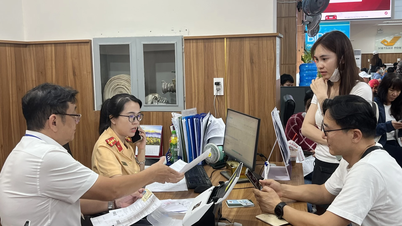





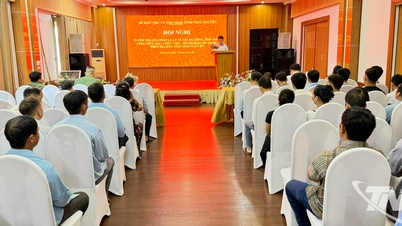



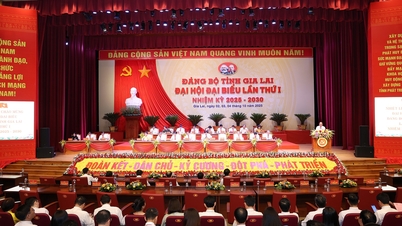






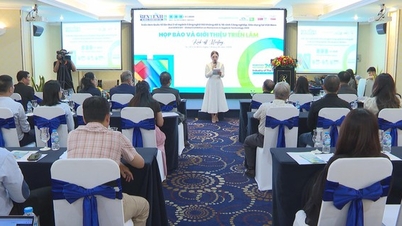
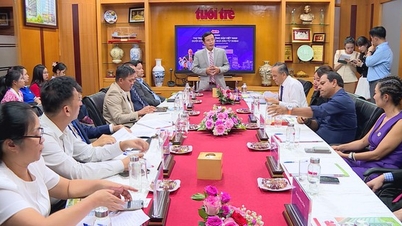



















































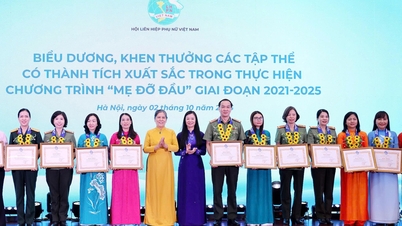







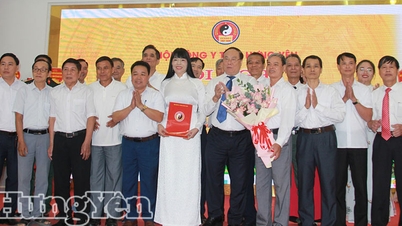













Comment (0)